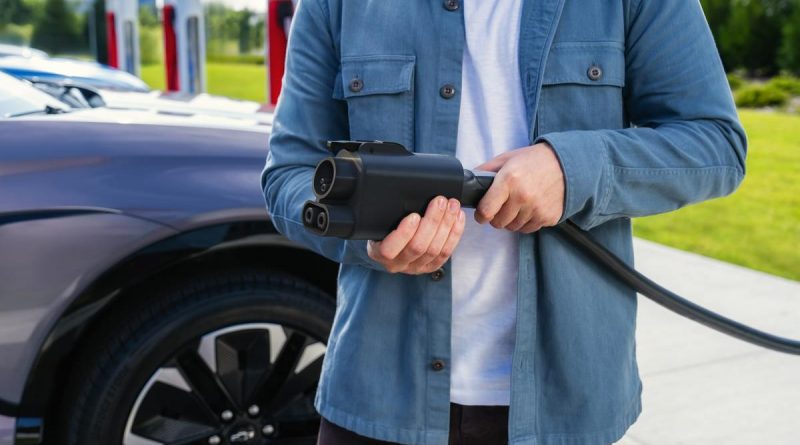Attention EV Owners: Get Ready for the Dongles!
Nearly a year ago, GM unveiled an adapter that allows existing electric vehicles to charge using North American Charging Standard plugs at Tesla Supercharger stations, providing significant advantages for EV owners.
Recently, GM has launched three new adapters designed to help customers access EV charging stations with varying charging rates and standards. While this adds convenience, it also introduces potential complexities; for instance, a household with two electric vehicles might now need four different adapters.
A few years ago, most EV models in the U.S. adhered to the Combined Charging System (CCS) standard, with Tesla as a notable exception. In 2022, Tesla released its own charging connector and port design, referred to as the North American Charging Standard (NACS), aiming to encourage its adoption by other manufacturers and network operators and establishing it as the new norm in North America.
This vision has come to fruition. Today, nearly all automotive manufacturers are providing adapters to access Tesla Supercharger stations and are planning to integrate the NACS design into their future vehicles.
“GM is fully committed to transitioning our complete EV lineup to NACS,” said Tim Ash, director of hardware products for GM Energy, in an interview with TechCrunch. “We believe adopting this unified standard enhances the experience for our customers.”
However, this transition has led to a rather chaotic situation, filled with a range of adapters.
In addition to the existing NACS-to-CCS adapter for rapid charging, GM is set to introduce a NACS-to-J1772 adapter for Level 2 charging (J1772 relates to the CCS plug intended for slower charging rates). Future GM electric vehicles equipped with NACS ports will include both a J1772-to-NACS adapter for Level 2 charging and a CCS-to-NACS dongle for fast charging.
TechCrunch Event
San Francisco
|
October 27-29, 2025
These new adapters “ensure that EV drivers — regardless of their vehicle’s charging type — can access nearly any charger as needed,” Ash emphasized.
This challenge isn’t exclusive to GM. For example, Hyundai is marketing the 2025 Ioniq 5 electric vehicles, which are equipped with NACS and include two adapters: one for Level 2 charging and another for CCS fast charging. This illustrates how the evolution of EV charging standards can complicate public charging until clarity is achieved.
Currently, most charging scenarios are relatively straightforward, as the majority of EV charging is conducted at home or work, where chargers tend to be more standardized.
However, public charging can quickly become convoluted. Drivers are encouraged to keep adapters in their vehicles to avoid the risk of being stranded or inconvenienced. Those with incompatible chargers at home might consider purchasing duplicates for ease, although most adapters typically retail for over $200.
Automakers aren’t the only factors driving the rising demand for adapters.
CCS and NACS have enough similarities that simple dongles can function across both charging speeds, but significant differences complicate simplification. In NACS, electricity travels through two large pins irrespective of charging speed, whereas CCS employs a different set of pins for Level 2 speeds and another for fast charging. Merging Level 2 and fast-charging capabilities into one charger could necessitate advanced electronics, significantly increasing costs.
Dialogues around new plug standards have been ongoing for some time. Apple has released iPhones featuring three different connector types, even before reaching its 20th anniversary.
However, the rate of change in consumer electronics is considerably faster compared to the automotive industry, and costs are much lower. A typical smartphone user spends between $500 to $1,000, upgrading every two to three years. Dongles are priced around $30. Your 12-year-old iPhone 4’s 30-pin dock cable? That’s long gone.
In contrast, replacing an average car or light truck is not nearly as simple. New vehicle prices have surged to nearly $50,000, contributing to the fact that the average vehicle on U.S. roads is over 12 years old.
While automakers have initiated this shift, there doesn’t seem to be urgency in completing it. So far, GM has confirmed only two EV models embracing the NACS charging standard: the 2026 Cadillac Optiq and the 2027 Chevrolet Bolt. The company has yet to provide a timeline for updating its remaining 12 EV models to the new standard.
In closing, brace yourself for the wave of adapters. As Ash remarked, “this transition will require time.”
The post Attention EV Owners: Get Ready for the Arrival of Dongles! appeared first on Wired24.
The post Hey EV Owners: Brace Yourselves for the Dongles! appeared first on Tech Weekly.



